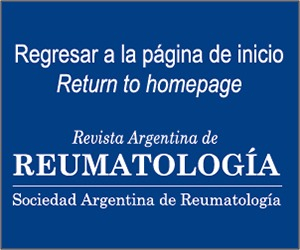Uso de autocuestionarios en reumatología. ¿Por qué su uso creciente y la necesidad de adaptarlos a cada población?
Resumen
Cualquier reumatólogo habituado a leer publicaciones y revisar presentaciones científicas en congresos, le puede haber llamado la atención la creciente cantidad de trabajos referentes al desarrollo y validación de autocuestionarios. Pero ¿por qué utilizar autocuestionarios y no medidas que incluyan sólo evaluación directa por parte del médico?Citas
I. Weldring T, Smith SM. Patient-Reported Outcomes (PROs) and Patient-Reported Outcome Measures (PROMs). Health Serv Insights. 2013;6:61-68.
II. Valderas JM, Alonso J. Patient reported outcome measures: a model-based classification system for research and clinical practice. Qual Life Res. 2008;17(9):1125-1135.
III. Citera G, Arriola MS, Maldonado-Cocco JA, et al. Validation and crosscultural adaptation of an argentine spanish version of the health assessment questionnaire disability index. J Clin Rheumatol. 2004;10(3):110-115. 4
IV. Waimann CA, Citera G, Dal Para F, et al. Validación de una versión argentina del Health Assessment Questionnaire-II (HAQ-II). Rev Arg Reumatol. 2011;22(2):20-30.
V. Cazenave T, Maldonado Cocco JA, Citera G. Validación y adaptación cultural de una versión argentina del cuestionario para calidad de vida PsAQoL en pacientes con artritis psoriática. Rev Arg Reumatol. 2011;22(2):42-50.
VI. Cayetti LA, Maldonado Ficco H, Schneeberger EE,et al. Validación del cuestionario Rheumatoid Arthritis Impact of Disease (RAID) en pacientes argentinos con artritis reumatoidea temprana y establecida. Rev Arg Reumatol. 2012;23(2):42-50.
VII. Duarte V, Martire V, Crespo-Amaya G, et al. Validación del índice Duruöz en una población argentina con esclerodermia. Rev Arg Reumatol. 2015;26(2):23-26.
VIII. Wells G, Beaton DE, Tugwell P, et al. Updating the OMERACT filter: discrimination and feasibility. J Rheumatol. 2014;41(5):1005-1010.
IX. Maldonado Ficco H, Pérez Alamino RS, Schneeberger EE, et al. Validación del cuestionario RAPID3 en una cohorte de pacientes con artritis reumatoidea temprana y establecida, y su correlación con otros índices de actividad. Rev Arg Reumatol. 2011;22(2):31-39.
X. O rozco MC, Schneeberger EE, Zamora N, et al. Validación del cuestionario RAPID3 en la cohorte argentina ESPAXIA de pacientes con espondiloartritis axial. Rev Arg Reumatol. 2016;27(4):11-16.
XI. Bellamy N. The WOMAC Knee and Hip Osteoarthritis Indices: development, validation, globalization and influence on the development of the AUSCAN Hand Osteoarthritis Indices. Clin Exp Rheumatol. 2005;23(5 Suppl 39):S148-153.
XII. R oos EM, Toksvig-Larsen S. Knee injury and Osteoarthritis Outcome Score (KOOS) - validation and comparison to the WOMAC in total knee replacement. Health Qual Life Outcomes. 2003;1:17.
XIII. N ilsdotter AK, Lohmander LS, Klässbo M, Roos EM. Hip disability and osteoarthritis outcome score (HOOS)--validity and responsiveness in total hip replacement. BMC Musculoskelet Disord. 2003;4:10.
XIV. Mehta SP, Sankar A, Venkataramanan V, et al. Cross-cultural validation of the ICOAP and physical function short forms of the HOOS and KOOS in a multi-country study of patients with hip and knee osteoarthritis. Osteoarthritis Cartilage. 2016;24(12):2077-2081.
Derechos de autor 2017 Sociedad Argentina de Reumatología

Esta obra está bajo licencia internacional Creative Commons Reconocimiento-NoComercial-SinObrasDerivadas 4.0.






